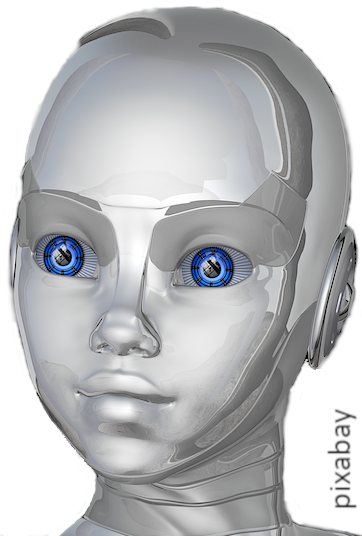A very warm welcome to PoreXpert version 2, the world-leading, patented simulation of pore networks and pore fluids within a very wide range of real and hypothetical porous materials.
This edition of the User Manual is available as a bound paper copy, a download from the website (pdf format), individual pages on the website, and as individual context-sensitive help pages supplied with the PoreXpert software, accessed via one of the ![]() buttons or clicking your F1 key. The context-sensitive help system accesses the relevant website page if you are on-line, as that is likely to be more up to date, particularly with regard to tutorials.
buttons or clicking your F1 key. The context-sensitive help system accesses the relevant website page if you are on-line, as that is likely to be more up to date, particularly with regard to tutorials.
Various different versions of the software are available.
If you need to register the software, then please see Registration.
If you would like a step by step guide through the software, then start at the Welcome screen.
To discover whether your experimental technique can provide input to the model, then go to the Experimental Techniques section.
If you want to check the validity of the model, then skip to our studies of property simulation validation, and description of the software consistency testing.
If you just want to plunge into the software and see what it can do for you, then there are Tutorials for you to follow. A list of keyboard shortcuts can be printed out for reference purposes.
Finally, you may have a very specific problem that you want solve, and you wish to see if PoreXpert can enlighten you. In that case, have a look at the Table of Contents or search the Index for the property that concerns you.
Brief description of PoreXpert
Input
PoreXpert's primary strength is its ability to inverse model the percolation characteristics of almost any rigid porous material. The primary measures of percolation characteristics are by mercury porosimetry, porometry or water retention.
It is also possible to input mathematically specified void networks, for example on the basis of electron microscopy, and to modify existing structures to simulate ageing, higher pressure sintering, weight loss etc.
In addition to the percolation characteristics, it is important to know the porosity accessible to the pore fluid of interest. Extrapolated helium pycnometry, coupled with powder pycnometry for irregularly shaped samples, gives a much ore reliable estimate than those from mercury porosimetry.
Depending on the system you are studying, then you may need to measure non-wetting fluid contact angles, rather than use the default value for mercury on sandstone.
Materials that can be studied include catalysts, tight-oil shale, nuclear graphite, filters, battery separators, sinters and soil.
For high porosity samples, consult the intermediate tutorial on how to view them.
For Application Notes (pdfs and PowerPoint shows) about some other applications, including special core analysis, filtration and pigment application onto a powdered substrate, visit the website Application Notes page.
What PoreXpert cannot usefully model are highly ordered nanoporous materials such as zeolites, highly deformable materials, and extremely highly porous materials such as aerogels. Nor can it model artificially layered samples with corresponding discontinuities in properties, for example an absorbent layer on a more open substrate. In such cases, it is probable that the layers will need to be studied separately.
Once the void structure has been generated, a wide range of void network properties can be measured, and the behaviour of pore fluids - liquids, gases, suspensions and dissolved ions - can be simulated.
PoreXpert is an inverse modelling package - i.e. it tries to go backwards from effect to cause. That is extremely difficult - specifically, for a particular mercury intrusion curve, porometry wet and dry curve, or soil water retention characteristic, there are a huge number of void networks that would all give the experimental curve. Many people cannot handle the fact that there is no single solution to their problem, so they take an easy way out - in the case of mercury porosimetry, they take the first derivative (slope) of the intrusion curve and assume that shows the void size distribution, or characterize a filter just by its porometry bubble point, or a soil by its Van Genuchten parameters. Each approach is a dead-end - the parameters are almost meaningless unless your sample can be described by a capillary bundle model, and do not allow further analysis or prediction, even though many think that they do.
So on the basis of a major body of research, both experimental and theoretical, carried out over four decades at the University of Plymouth, U.K., and our research partners in academia and industry, we have produced an inverse modeller for all to use. PoreXpert version 2 is another giant step forward, because it allows identification of those voids that are actually clusters of smaller voids. The research on which it is based was published in 2018, and is recommended reading for anyone wishing to use PoreXpert for their research or product development.
User-friendly characteristics
❖The software is highly automated, with a user-friendly interface that by default hides the numerous options available. 
❖It is intelligent - its uses a quasi-Bayesian Boltzmann-annealed simplex to search for suitable void structures, which is skewed towards its experience of modelling previous samples, and to Euler beta void size distributions which include Gaussian and Poisson-like distributions. It also progressively learns about your samples as you use it.
❖There are a range of outputs - on-screen graphs and structures, 3-D virtual reality visualizations, and outputs to PoreXpert files for re-starting calculations, to fully formatted pdf reports, and to comma separated numerical tables suitable for your own graphs.
Scientific characteristics
❖PoreXpert has characteristics that are likely to be different from other models that you may have used. It is stochastic - i.e depends on random numbers to generate a range of possible answers. In order for its answers to be predictable, rather than yet another variable, it uses pseudo random numbers - i.e. predictable for each chosen stochastic generation seed - as tested in our software validation. |
|
❖The software is a priori - i.e. based on pure mathematics and physical chemistry. There are approximations, but there are no semi-empirical calibration factors - it is fudge factor free. So it is wise to calibrate the answers against your own experimental characterisations if they are available. PoreXpert gives invaluable insights into trends in sample properties, saving days of trial and error lab testing. Real world examples are shown in our property validation exercise, and what-if experiments - for example how will the wettability of a porous building stone change after weathering, or how would the filtration characteristics of a filter change if the sinter was compressed by an additional 5 %. |
|

